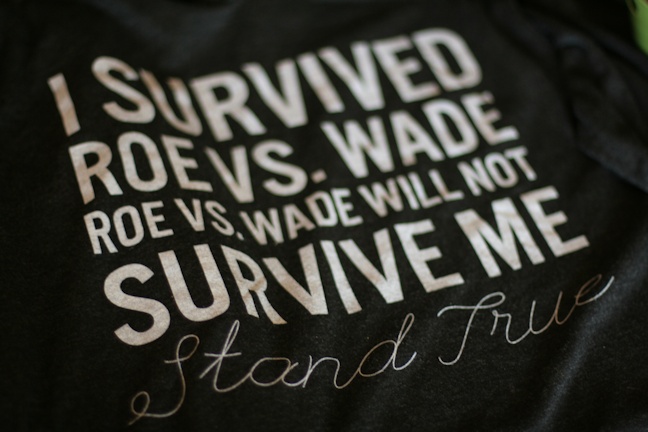Roe v. Wade has been the most fatal judicial decision in U.S. history. In the aftermath of Roe, 58 million babies have been aborted, while countless women have been irreparably damaged and families have been harmed and torn apart.
Roe was based on multiple mistakes, direct lies, and a rejection of accurate science, research, and the real Constitution. (Even Ruth Bader Ginsburg agrees that Roe was “heavy-handed judicial intervention [which] was difficult to justify.”) However, there are two particularly damaging mistakes – one made by the justices and one by the attorney who argued the case
FATAL MISTAKE #1: The justices completely missed the intent of the 14th Amendment.
The justices behind Roe wrote that there was no constitutional basis for protecting preborn life. They rejected the 14th Amendment as a basis for protecting the preborn, even though it recognizes the right to life and equal protection for all persons.
They entirely failed to recognize the specific intent of the Congressional sponsors of the 14th Amendment. The intent – a key part of interpreting law – shows that the sponsors wanted to include future vulnerable and oppressed human beings in constitutional equal protection.
Representative John Bingham, a House sponsor, intended the Amendment to be applied universally – to any and every human being.[1] In a speech to Congress, prior to the passage of the 14th Amendment, he declared that the Constitution is “based upon the equality of the human race. Its primal object must be to protect each human being…”[2]
Senate sponsor Jacob Howard agreed that “the measure would apply to even the ‘humblest, the poorest, the most despised of the human race.'”[3] Representative H.D. Scott stated: “The strength of this Government…is in its willingness as well as ability to do equal and exact justice to every human being…”[4] He condemned justice being “made subservient to interest” and when the strong “can prey upon the weak and unfortunate with impunity.”[5]
Just as these statements applied to Black Americans at the time, they apply to the preborn now, just as they did on January 22, 1973, and at the time the 14 Amendment was passed. The Roe Court would have done well to recognize this clear and constitutional truth.
FATAL MISTAKE #2: The lawyer who argued Roe believed women needed abortion to be successful.
There are certainly things to admire about Sarah Weddington, the 26-year-old lawyer who successfully argued Roe v. Wade before the U.S. Supreme Court. At a very young age, she took on the entire nation to advocate for something she believed in. She didn’t let her age, gender, or inexperience stop her.
However, besides the fact that Weddington was on the completely wrong side of a human justice issue, she also has a sad story in her personal history. Before she married Ron Weddington, she became pregnant with their child in her final year of law school. Neither of them wanted children, and so the couple traveled over the border to Mexico, for an illegal abortion.
Weddington cites her ability to have an abortion as the reason she went on to have a career as a lawyer, and yet countless successful female attorneys have proven Weddington’s assertion wrong. Women are, in fact, able to be successful and to be mothers.
Erika Bachiochi, a feminist and former pro-choice attorney, authored “Embodied Equality: Debunking Equality Arguments for Abortion Rights” for the Harvard Journal of Law & Public Policy. She also wrote about the real truth on abortion and women for CNN:
As a one-time abortion rights supporter, I well know the temptation to see the right to abortion as a representation of women’s equality. …
Abortion betrays women by having us believe that we must become like men — that is, not pregnant — to achieve parity with them, professionally, socially, educationally. . …
When we belittle the developing child in the womb, a scientific reality that most pro-choice advocates have come to admit, we belittle and distort that child’s mother. We make her out to be one with property rights over her developing unborn child (much as husbands once had property rights over their wives).
We give her the inhumane (but for 42 years, constitutionally protected) right to decide the fate of another human being, of a vulnerable child — her child — to whom she properly owes an affirmative duty of care. We do all this rather than offering her the myriad familial and social supports she needs, whatever her situation, and cherishing her role in the miracle of human life.
Conclusion
While these two fatal mistakes continue to cost millions of lives, we can each personally work to stop the damage. In our conversations with friends, on social media, on campus, and at our offices, clubs, churches, and groups, we can spread the truths that every human being – at every stage of development – deserves equal protection and that no woman needs to take her child’s life to succeed at life. We can actively and practically help women who make the choice for life.
As Carol Tobias, President of the National Right to Life Committee, says: “As long as abortion is legal, pro-lifers will fight and never give up.”
Sources:
[1] CONG. GLOBE, 34th Cong., 3rd Sess. (1857)
[2] Id.
[3] SENATOR JACOB HOWARD, SPEECH INTRODUCING THE FOURTEENTH AMENDMENT, Speech delivered in the U.S. Senate, May 23, 1866
[4] CONG. GLOBE, 34th Cong., 3rd Sess. (1857)
[5] Id.








